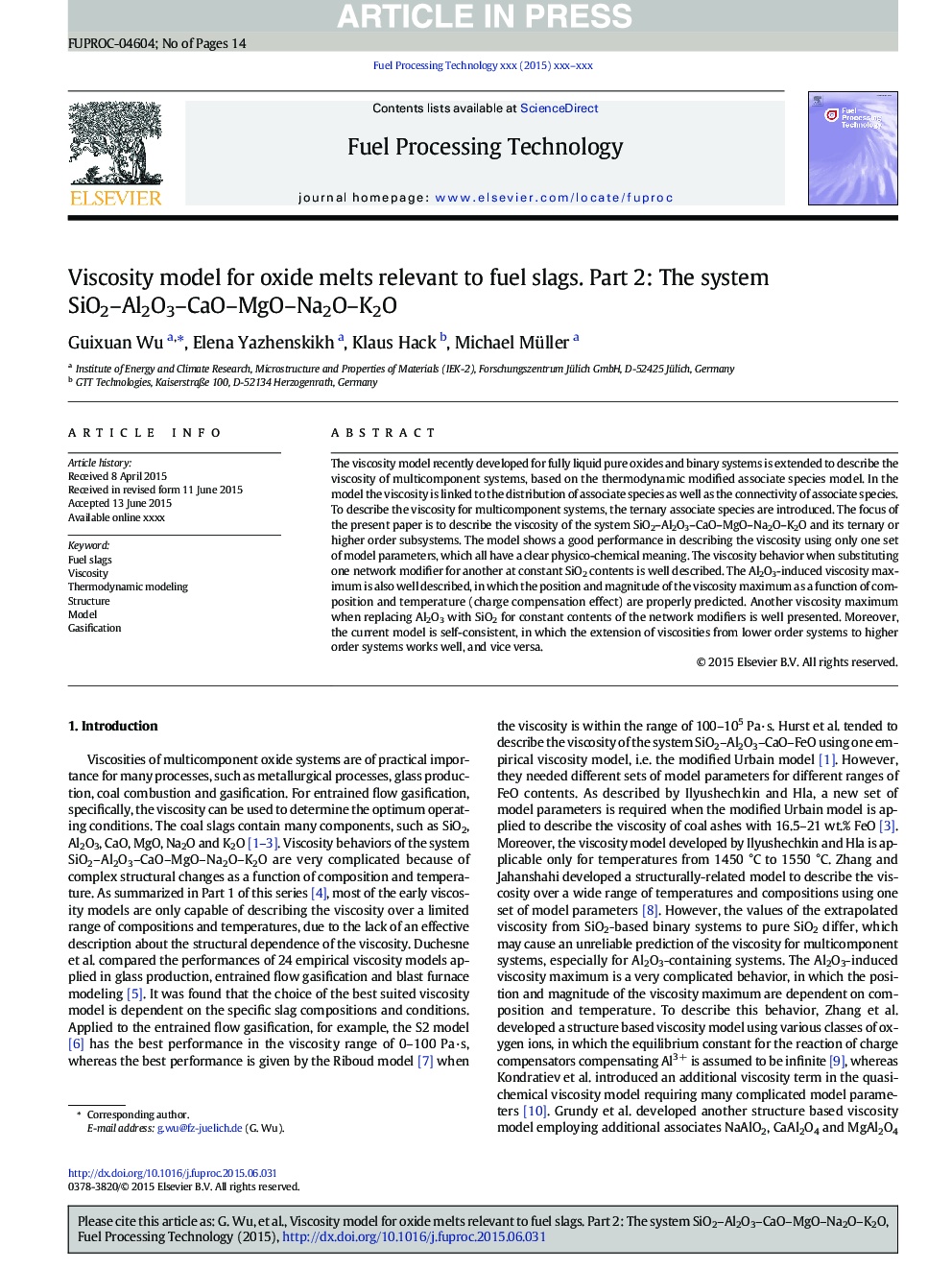| Article ID | Journal | Published Year | Pages | File Type |
|---|---|---|---|---|
| 6656905 | Fuel Processing Technology | 2015 | 14 Pages |
Abstract
The viscosity model recently developed for fully liquid pure oxides and binary systems is extended to describe the viscosity of multicomponent systems, based on the thermodynamic modified associate species model. In the model the viscosity is linked to the distribution of associate species as well as the connectivity of associate species. To describe the viscosity for multicomponent systems, the ternary associate species are introduced. The focus of the present paper is to describe the viscosity of the system SiO2-Al2O3-CaO-MgO-Na2O-K2O and its ternary or higher order subsystems. The model shows a good performance in describing the viscosity using only one set of model parameters, which all have a clear physico-chemical meaning. The viscosity behavior when substituting one network modifier for another at constant SiO2 contents is well described. The Al2O3-induced viscosity maximum is also well described, in which the position and magnitude of the viscosity maximum as a function of composition and temperature (charge compensation effect) are properly predicted. Another viscosity maximum when replacing Al2O3 with SiO2 for constant contents of the network modifiers is well presented. Moreover, the current model is self-consistent, in which the extension of viscosities from lower order systems to higher order systems works well, and vice versa.
Related Topics
Physical Sciences and Engineering
Chemical Engineering
Chemical Engineering (General)
Authors
Guixuan Wu, Elena Yazhenskikh, Klaus Hack, Michael Müller,
